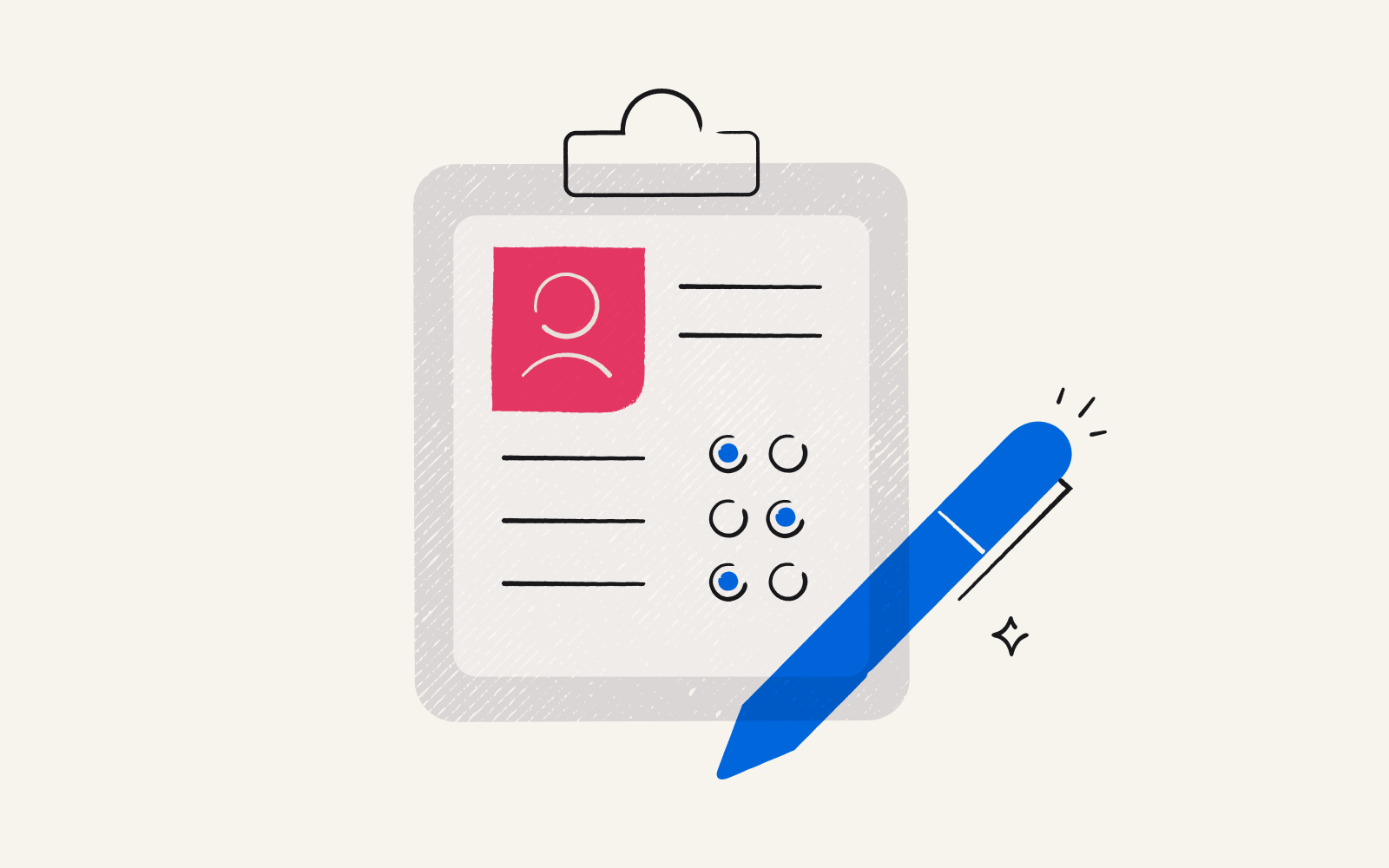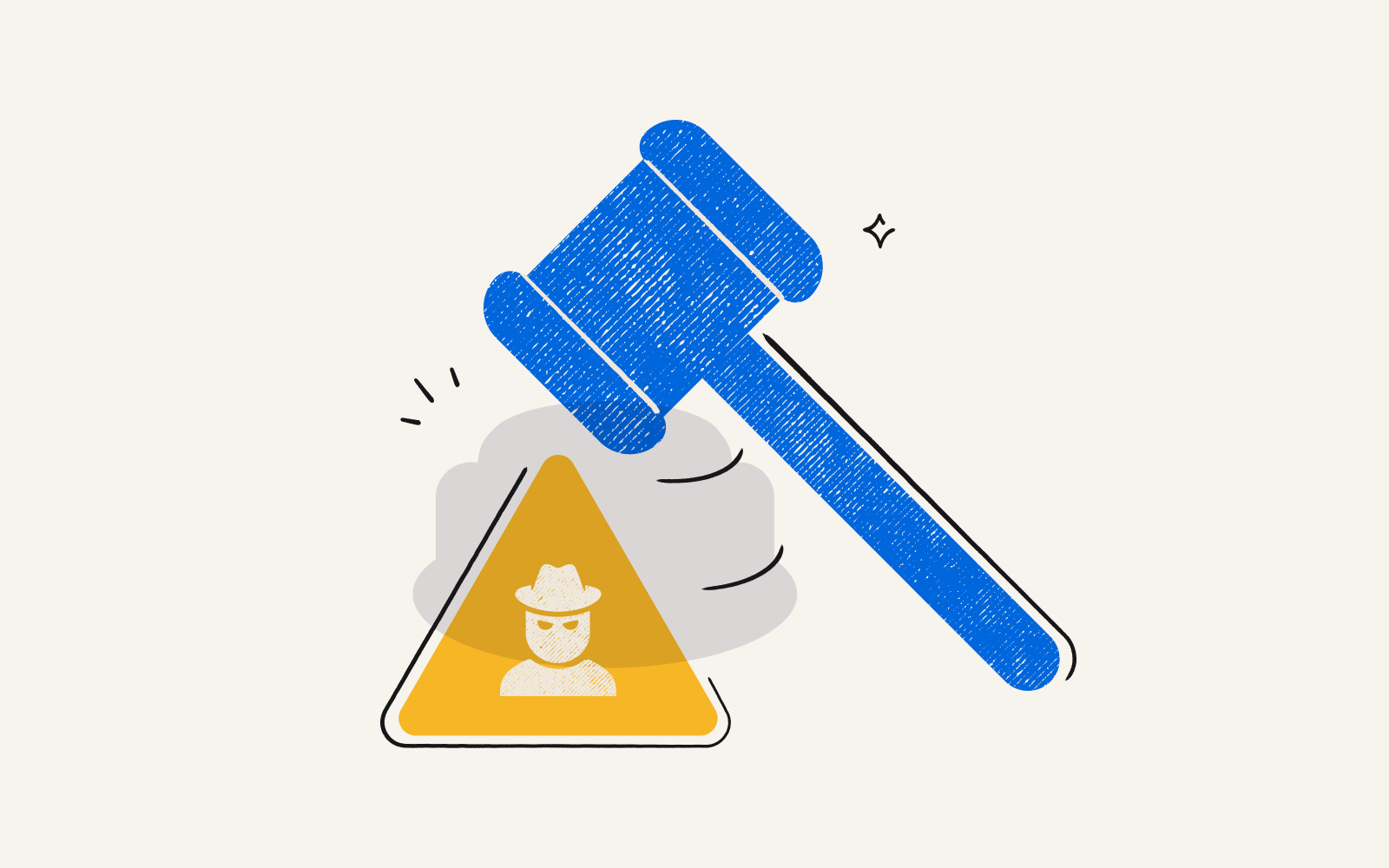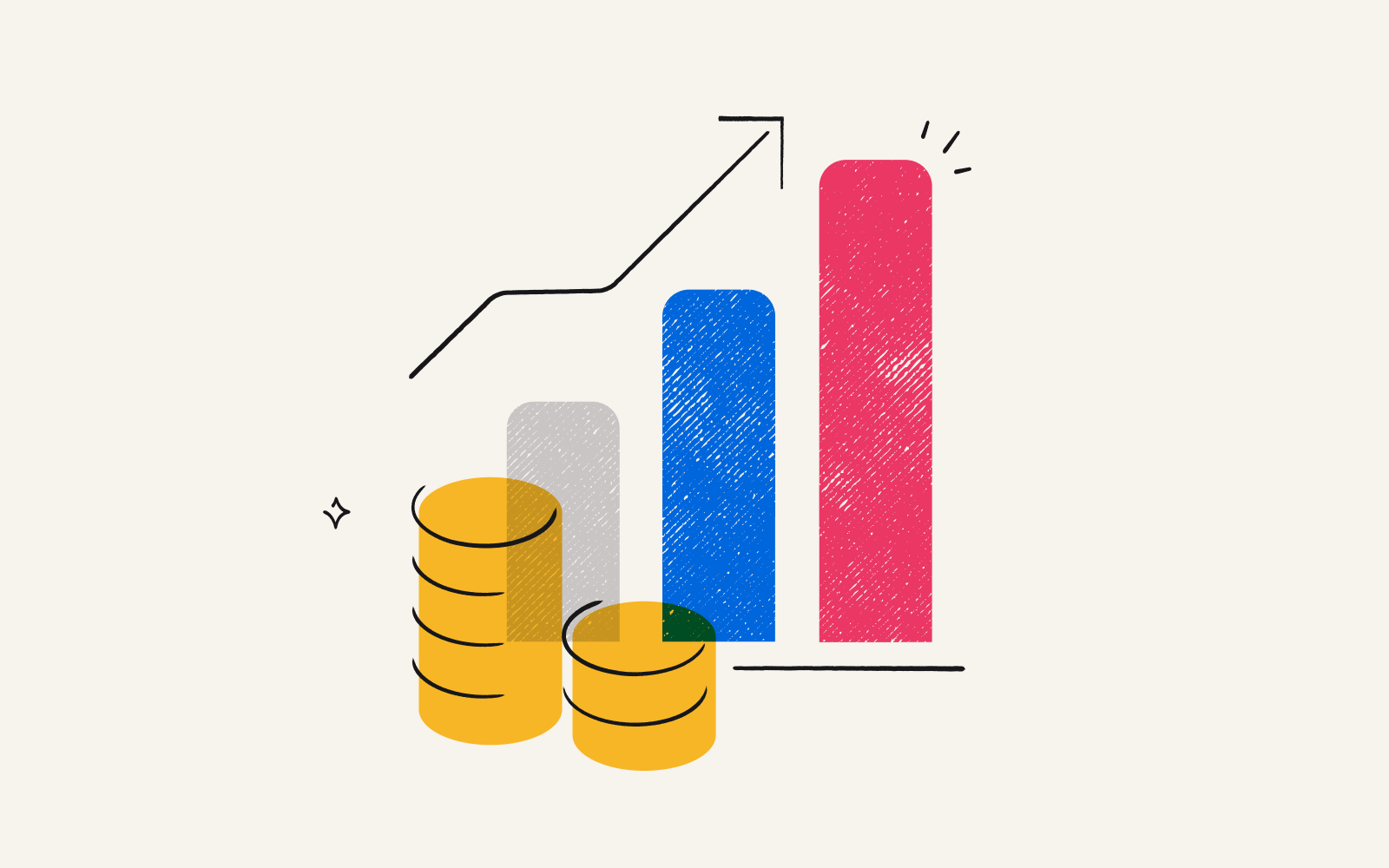What is customer profiling in market research?
By Laura Ojeda Melchor|7 min read|Updated May 3, 2024

Customer expectations are at an all-time high. Consumers expect highly tailored service with products that speak directly to their needs.
Businesses have to think on their feet like never before, reacting at lightning speed to changes in the market.
The secret sauce to staying relevant is stepping up your customer profiling game.
In this article, you’ll learn what customer profiling means and why it matters.
You’ll also discover how to do it, step by step.
What is customer profiling?
Customer (or consumer) profiling is the process of gathering information about your customers so you can understand their needs and wants. You might see it used interchangeably with the marketing term “audience segmentation.” It’s also confused with t buyer persona building.
While these terms are part of customer profiling, each only describes one piece of the process. Customer profiling has three steps:
Audience segmentation: Companies begin the job of understanding their target audience and existing customer base by dividing it into groups. There are four main segments, or group categories: demographic, psychographic, geographic, and behavioral. We’ll look into each of these categories in more detail later.
Customer profile creation: Once companies know more about their audience’s characteristics, they can organize the information so it's easy to digest. A customer profile is exactly that: a document or infographic that presents a high-level overview of a company's customers. It uses the information gleaned in the audience segmentation process to tell the story of your customer base.
Buyer persona building: Now it’s time to understand the people in your customer segments on an individual level. A buyer persona is a semi-fictional snapshot of an ideal customer. It's rooted in reality: you use market research and data about existing or would-be customers to build it. Each persona outlines the goals, challenges, and behaviors of a single, fictional person who represents a target segment.
Why is customer profiling important?
Customer profiling helps businesses put themselves in their customers' shoes. When you know who your customers are and what they want, you'll enjoy several benefits. These include:
Tailored marketing: When you understand different groups of customers, you can create ads that are interesting to each group. This replaces billboard-style marketing, where you create one single, expensive ad and hope at least some people like it.
Creating products people want: You know what types of products you like because you know yourself really well. With customer profiling, you develop deep knowledge of their characteristics and predilections.. This means you can create the types of products they’ll be motivated to buy.
Improving the customer experience: Knowing what customers like and don't like helps businesses make the shopping experience better. When customers enjoy their experience, they're more likely to come back.
Staying ahead of competitors: Understanding your customers better than your rivals do gives you a competitive edge. It helps you make smarter choices about where to sell your products, how much to sell them for, and what features to highlight in ads.
The primary segments used in customer profiling
Audience segmentation is the foundation for customer profiling. Earlier, we touched on the four main types of segments. Here, we’ll take a closer look at each one. We’ll also reveal three bonus segments companies can use to understand their customer base.
Demographic
Demographic segmentation is when you group customers based on demographic information. This includes things like age, gender, income level, education, occupation, marital status, and family size. Information like this is a great starting point for understanding who your customers are.
Geographic
With geographic segmentation, companies divide their target audience based on their physical location. This could range from broad categories like countries and cities to more specific ones like neighborhoods or zip codes. It helps businesses tailor their products and marketing strategies to local preferences, climates, and cultural factors.
Psychographic
What are your customers' lifestyles, interests, values, attitudes, and personalities? Psychographic segmentation helps you find out. This type of segmentation method goes deeper into understanding what motivates consumer behaviors. It helps companies create products and ads that resonate on a personal level.
Behavioral
Behavioral segmentation is most helpful when you already have a solid customer base. You can group your customers based on purchasing habits, product usage, spending patterns, and loyalty. With this information, you can create custom offers that match a customer's stage in the buying journey.
Technographic
Technographic segmentation is relatively new. It involves segmenting customers based on which types of devices and software they use. Technographic segmentation is especially helpful if you offer digital products and services, like cloud software.
Needs-Based
Needs-based segmentation involves grouping customers based on their specific needs and requirements. The goal is to solve the problems that lead customers to seek out products or services in the first place.
Firmographic
For business-to-business (B2B) companies, firmographic segmentation is a must. It involves categorizing businesses and organizations based on shared company or industry attributes. This includes things like industry type, company size, revenue, number of employees, and geographic location. It's key for creating products and marketing messaging that click with specific types of businesses or sectors.
How to create a customer profile
Not sure where to get started? Here’s how to segment your audience, build a customer profile, and create buyer personas for a complete picture of who your customers are.
1. Start with audience segmentation
For businesses, there’s nothing more joy-inducing and overwhelming than staring at a huge database filled with the names of your customers. Don’t worry. You will get them all organized and categorized.
The process starts with audience segmentation. Here’s what to do first:
Define your target audience: Take a look at your existing customers. (Or, if you don't have any yet, think carefully about who your product is for.) What characteristics can you identify? If your customers are individuals, look for demographics: age range, sex, and professional status, for instance. For B2B companies, identify the size and type of business you serve.
Collect data: Use market research methods to collect more information about your target audience. Surveys and interviews can provide direct insights from customers themselves. Social media and web traffic analytics offer information about their online behavior. Purchase histories and customer service interactions can also reveal important patterns.
Analyze the data: Dive into the data to spot patterns that emerge across your customer base. Look for similarities in how different groups of people interact with your brand. What's their decision-making process? What drives their loyalty—or dissatisfaction? Customer relationship management (CRM) tools can help you manage and analyze this data.
The next step is to categorize your customers into distinct segments. Since you started with demographic (for individuals) or firmographic (for B2B businesses) data, you now need to find out which geographic groups these customers fit into.
Once you know geographic traits, move on to psychographic characteristics.
Then filter the customers further according to behavioral, technographic, and needs-based traits.
You’ll end up with many different groupings of customers. Now you can create a customer profile for each group.
2. Create customer profiles
When you look at your groupings, you’ll notice some customers share demographic qualities but have different psychographic traits. Others will have the same technographic but different behavioral characteristics.
To give you a quick example, let’s say a hypothetical outdoor company came up with these three sets after segmenting its target audience:
Customer Set 1: 18-25-year-old women (demographic) who live in the Northeast (geographic), spend 10+ hours a week outdoors (psychographic), buy $50-$100 in outerwear each month (behavioral), and shop on their mobile phones 75% of the time (technographic).
Customer Set 2: 40-55-year-old women who live in the West, spend 20 hours a week outdoors, buy $300-$500 in outerwear each month, and shop mostly on desktop computers.
Customer Set 3: 35-50-year-old men who live in the South, spend 20 hours a week outdoors, buy $500-$700 in outwear each month, and shop mostly on mobile phones or tablets.
You can give the sets memorable names or just label them by number. Now, you can flesh out what you know about each set or group with a detailed customer profile. Include insights your team has gained along the way—including notes on which products align with the customer set.
For example, for Customer Set 1, a customer profile could look like this:
Name: Customer Set 1
Age: 18-25
Location: Northeast United States—(includes states like Connecticut, Delaware, Maine, and Vermont). Their purchases line up with the seasons—jackets, hats, and scarves from fall to late winter and hiking and swimming gear in the spring and summer.
Time spent outdoors: This group spends 10 hours outdoors, or more if they can. They have mentioned in surveys that they’d spend more time outdoors if they weren’t working or in school.
Monthly spend on outerwear: Customers in this set spend between $50 to $100 a month on outerwear, so their budget is limited. But if they become loyal customers, they might stick with us as they advance in their careers and can afford to buy more outdoor gear.
Buying platform: These customers like to shop on their phones (75%). They use our app to find products they like. Many are also part of our email list and often click on discount codes and ads we send out.
Product match: Our more budget-friendly line of products suits these customers well. They’re more likely to buy our light, $75 rain jacket than our $250 wool peacoat. We will focus on sending customers discount codes and offers for our budget-friendly products. During holiday weekends and other special events, we’ll offer them large discounts on some mid-priced items.
3. Build buyer personas
Now for the fun part. If you enjoyed your high school English creative writing unit, you’ll love making a buyer persona for each segment.
This is also a great use case for AI. We asked ChatGPT to create a buyer persona based on Customer Segment 1.
Persona Name: Outdoor Enthusiast Emma
Age: 18-25
Location: Northeast United States (e.g., Connecticut, Delaware, Maine, Vermont)
Lifestyle and interests:
Emma embodies the spirit of adventure. She spends as much time as possible outdoors, exploring the diverse landscapes of the Northeast. Whether it's hiking through the foliage or enjoying the coastal beaches in summer, Emma makes the most of every season.
She tries to balance work and school with her love for the outdoors. If she can't go for a hike, she'll study by the beach or in her favorite park.
Spending habits:
Emma allocates $50 to $100 monthly on outdoor wear. She prioritizes functional and affordable gear that keeps up with her active lifestyle and the seasonal changes in her region.
As she progresses in her career and gains financial flexibility, Emma is open to expanding her purchases. She plans to stay loyal to brands that have supported her outdoor adventures from the start.
Shopping preferences:
A digital-native shopper, Emma likes to browse and purchase through her smartphone, using apps to find the best deals and new products.
Responsive to email marketing, she appreciates receiving discount codes and special offers. Especially for budget-friendly products that match her interests and needs.
Product preferences:
Emma gravitates towards products that offer value and performance, like a light, durable rain jacket that doesn't break the bank. While she admires higher-end items like wool peacoats, her current focus is on gear that meets her immediate outdoor needs without overspending.
She values special deals and discounts, particularly during holiday weekends and promotional events. These tempt her to explore mid-priced items within her growing interest and budget.
Narrative: Emma is at the heart of a vibrant, youthful demographic that cherishes the outdoors and seeks to blend adventure with everyday life. Emma looks for brands that understand her passion for nature, her need for affordability, and the convenience of mobile shopping. She's a promising loyal customer, with potential for increased spending as her financial situation improves.
Supplement Chat-GPT’s output with additional details for a more complete buyer persona.
Key takeaways
Ready to get to know your customers better than ever before? Remember these three takeaways:
Customer profiling is essential for success: Customers expect products and ads made just for them. Customer profiling helps businesses figure out what their customers want.
The process has three parts: To really get customer profiling right, businesses need to do a few things. First, split your audience into groups. Then, create detailed snapshots of these groups with customer profiles and buyer personas. A customer profile is a high-level overview, while a buyer persona is a detailed and semi-fictional look into your customer.
Profiling helps you beat competitors: Knowing your customers better than anyone else means you can offer exactly what they're looking for. This not only makes customers happy but also gives you a competitive edge.
Whether you’re running a survey or focus group to get to know your target audience, Tremendous is the simplest way to offer incentives to market research participants. Sign up and send your first incentive in minutes or take a demo to start learn how Tremendous can make sending incentives fast and free.
Published May 3, 2024
Updated May 3, 2024


